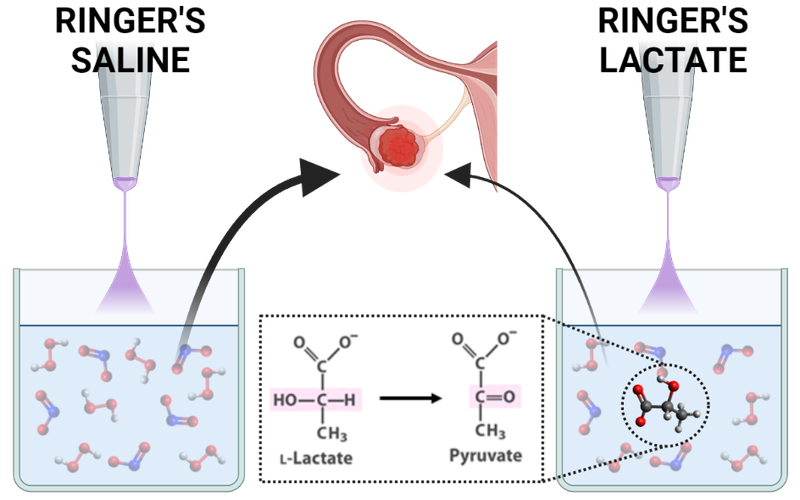New paper studying how the oxidation of lactate to pyruvate mediates the cytotoxic potential of plasma‐treated saline solutions in ovarian cancer.
Oct 04, 2023
"Oxidation of Lactate to Pyruvate Mediates the Cytotoxic Potential of Physical Plasma-Treated Saline Solutions in Ovarian Cancer" is a new paper, published by former PhD student Cristiana Bucci and Doctors Francesco Tampieri, Miguel Mateu-Sanz, Romolo Laurita, Vittorio Colombo and Cristina Canal at Plasma Processes and Polymers, exploring the potential of plasma-treated saline solutions as a novel approach in the treatment of epithelial ovarian cancer, a prevalent gynecological tumor associated with poor prognosis and frequent recurrences.
PlasmaMed Lab, in collaboration with the Research Group for Industrial Applications of Plasmas and the Department of Industrial Engineering at Alma Mater Studiorum Università di Bologna, have recently published the paper "Oxidation of Lactate to Pyruvate Mediates the Cytotoxic Potential of Physical Plasma-Treated Saline Solutions in Ovarian Cancer" at Plasma Processes and Polymers Journal. The paper is the result of a Short Term Scientific Mission (STSM) within the PlasTHER COST Action and explores the potential of plasma-treated saline solutions as a novel approach in the treatment of epithelial ovarian cancer. EOC is a prevalent gynecological tumor associated with poor prognosis and frequent recurrences.
Physical plasma has garnered attention in cancer therapy due to its ability to generate reactive species, which can be transferred into liquids and exhibit anticancer properties. The paper analyzes plasma-treated saline solutions by quantifying reactive species and assessing the effect of plasma-induced modifications on their cytotoxic efficiency on EOC cells.
This study confirms the development of innovative treatment strategies for ovarian cancer, offering new perspectives for therapeutic intervention.

Share: